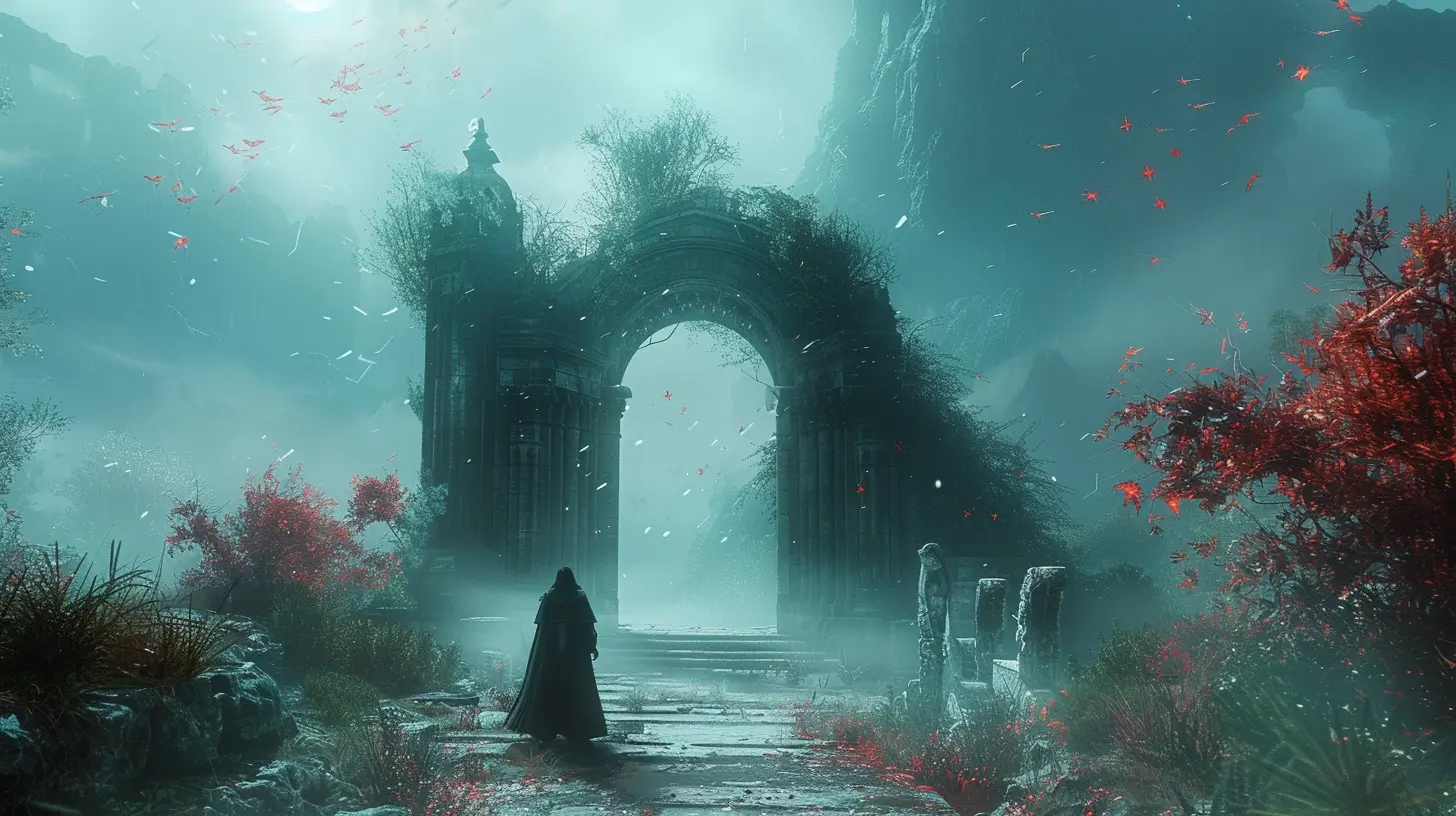Making In-Game Choices Matter Without Multiple Endings
14 November 2025
Let’s be real for a second — choice in games is hot right now. We’ve all been there, faced with a decision in a game that feels massive, only to realize it barely changes a line of dialogue or moves a slider on some hidden morality bar. Ugh, right? But here’s the thing: making in-game choices feel meaningful doesn’t have to hinge on multiple endings. You can absolutely give players the feels, the impact, and the weight — all without writing seventeen different finales. Intrigued? Buckle up, buttercup, because we’re diving deep into how to nail this in game design, and why it slaps when done right.

The Big Fat Myth: Choices Only Matter If the Ending Changes
Let’s squash this lie once and for all. There’s this annoying misconception floating around the gaming world that unless your choices lead to drastically different endings, they don’t count. That’s like saying the only part of a roller coaster worth riding is the last five seconds. Nah, honey. The journey matters.Sure, branching storylines with totally different conclusions are cool, but they’re not the only way (or even the best way) to make players feel their decisions counted. Sometimes, it’s the little things along the way — like who’s got your back, who you pissed off, and the scars your character carries — that hit hardest.

Why Multiple Endings Can Be Overrated
Okay, unpopular opinion time: multiple endings are often more trouble than they’re worth — both for devs AND players.- Writing and dev time explodes. Every new ending means hundreds more lines of dialogue, cutscenes, and QA testing. It can become a nightmare.
- Most players never see them all. Be honest — how many times do you actually replay a 60-hour RPG just to see every ending? Exactly.
- They can feel cheap. If the entire game boils down to a single decision at the end, what’s the point of the 40 hours before that?
So yeah, multiple endings can be cool, but they’re not the holy grail of player agency. There are smarter, sassier ways to make choices land — and that’s what we’re here for.

1. Dynamic World Reactions: Let the World Feel Alive
You know what feels better than a “Good Ending” or “Bad Ending”? A world that remembers you.Let your choices ripple through the environment. Maybe you saved a village early in the game, and much later, they send reinforcements to help you in a boss fight. Or you lied to a key character, and they never fully trust you again. That’s drama. That’s storytelling. That’s impact.
Pro tip for devs: Don’t just change dialogue; change the mood. Make people treat the player different. Let townsfolk whisper behind their back. Or stop what they’re doing when you walk past. Players eat that stuff up.

2. Character Relationships: Make It Personal
You want your players clutching emotional pearls? Focus on how choices affect relationships.Games like Mass Effect and The Witcher didn’t need 12 endings to make you sweat every decision. Why? Because how you treat people matters. If you insult your crew or let a bestie die to save yourself, that stings way harder than ending #3B.
Let actions shape friendships — or spark rivalries. Maybe your kind-hearted approach makes a ruthless ally leave. Maybe your cold pragmatism earns their respect. Either way, players feel it in their core. That’s juicy, delicious conflict, baby.
3. Consequences That Echo Through Time
Let your game hold a grudge. I’m serious.The most satisfying choices are the ones that come back to bite (or bless) you later. Especially if the result shows up way after the initial decision. We’re talking long-game consequences here, people.
Did you ignore that kid begging for help in Act I? Welp, he’s back in Act III, but now he’s working for the bad guys — and he’s gunning for revenge. Oops.
Or maybe you planted flowers for a grieving widow three chapters ago, and now she helps you break into a heavily guarded fortress. It’s the butterfly effect, and it never gets old.
4. Environmental Storytelling: Let the Landscape Talk
Who says you need dialogue trees to show consequences? Sometimes, the world itself tells the tale better than any cutscene.Let’s say you burned down a forest in a side quest. Later, you revisit the area, and now it’s a scorched wasteland. The animals are gone. The skies are gray. It’s haunting — and you did that.
Environmental changes based on past actions can be some of the most powerful feedback loops in gaming. Players notice. They remember. And it’s so much more satisfying than a pop-up saying “+5 Evil Alignment.”
5. Micro-Changes, Macro-Feels
Not every choice has to be earthshattering. In fact, constant small choices that accumulate can hit even harder.Let’s say you’re navigating a branching dialogue system where you’re consistently kind, firm, sarcastic, or deceptive. Over time, these shape how NPCs see you — and how you see yourself. You’re not just picking options; you’re crafting an identity.
Micro-decisions that stack into a personal arc are like emotional Legos. Individually simple — but combined? You’ve just built a narrative castle.
6. False Choices That Still Slap
Spoiler alert: Even choices that don’t change the outcome can be meaningful — if they’re written well.It sounds shady, but hear me out. Games like Telltale’s The Walking Dead knew how to punch you in the gut with a “fake” choice. You choose to save one character... but they die anyway. That sucks, right? But the feeling was real in the moment. You thought it mattered, and that tension made it immersive.
As long as the illusion is strong, and your emotions are genuine — that’s still great game design.
7. Let Players Own Their Story
This one’s crucial: Reflect the player's choices back at them.Your game doesn’t need ten endings if your journal, dialogue, and memories show what kind of path the player took. Recap past decisions through news reports, character dialogue, or even dreams. Make players feel like they authored their journey.
That agency — the sense of control — is the real satisfaction. Not how many different epilogues you wrote.
8. Give Choices Thematic Weight
Choices hit harder when they tie into the game’s themes. Ask yourself (or the player): what are they really choosing?In Bioshock, your decision to save or harvest Little Sisters wasn’t just a gameplay mechanic. It was a gut-check on how far you’d go for power. In Undertale, sparing or killing enemies was a reflection of you as a player — not just your character.
Make choices echo the core message of the game, and suddenly every decision feels poetic. (Yes, we’re getting deep now.)
9. Tie Choices to Gameplay, Not Just Narrative
Don’t keep choices locked in the story box. Let them bleed into gameplay mechanics.Did you choose to betray your faction? Cool, now you’re locked out of their gear and missions. Did your reputation tank? Shops charge you more. Did you choose to rule with fear? Now NPCs flee instead of help.
When choices change not just the story, but the way you play — that’s a game that’s thinking on a whole ‘nother level.
10. Unpredictable Outcomes Keep Players Guessing
If every choice has an obvious “good” or “bad” result... yawn. Predictable much?Spice things up. Add ambiguity. Maybe the “merciful” choice gets an ally killed. Maybe the “selfish” route unexpectedly saves lives. Keep it messy.
Real life’s not black and white — and great games embrace the grey. If players don’t know what’s going to happen, they’ll consider decisions more carefully. And that, my friends, is how you get them emotionally invested.
Final Thoughts: Choices Are About The Ride, Not Just The Destination
Look, we love a good finale as much as the next gamer, but if you put all your narrative eggs in the "ending basket," you're missing the point. The magic of in-game choices lies in the moment-to-moment experience — the emotions, the consequences, the surprises, and the subtle shifts that make each playthrough feel unique, even if the ending isn’t.So here’s to more games that understand that choices can hit hard without having to write 12 different credits scenes. It’s not about having ten endings. It’s about making one hell of a personalized journey.
So go ahead, devs. Craft those deliciously messy, morally murky, consequence-rich moments. We’ll play ‘em. Twice. Maybe three times. Even without multiple endings.
Because when it’s done right? That’s the kind of choice that really sticks with you.
all images in this post were generated using AI tools
Category:
Game Content CreationAuthor:

Jack McKinstry

